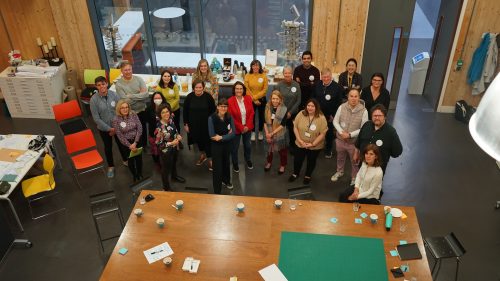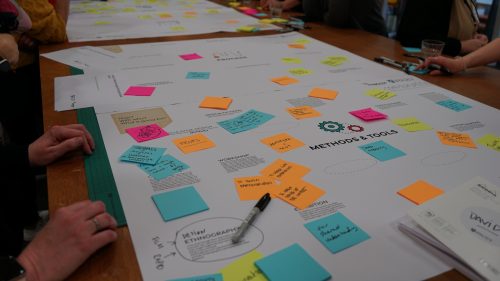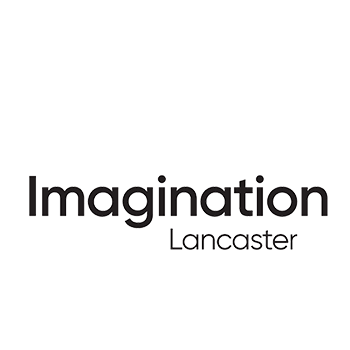Design in Place Based Policy Workshop
Last week we held a workshop to explore how design might be used in developing place based policy, with attendees coming from Imagination, local government, Policy Lab (based in central government) and government organisations. Over two days we explored what we mean by place and the types of tools and methods that could be used in designing policies for place.
Why is place based policy making important?
Policy makers face challenges in tackling complex problems such as climate change, post COVID-19 recovery and ensuring equitable access to services. These issues are experienced in different ways in different places, and ‘one size fits all’ policy approaches are not always the most suitable.
The idea of place based policy is becoming more important to governments at all levels in this country, and is seen as a way in which to make policies based on the needs of a particular place and those who live there. This approach is also at the centre of the government’s Levelling Up agenda, which aims to give more power to local policy makers and communities. However, in our research we have found that what is meant by ‘place’ isn’t always made clear. We have also found that design methods and tools offer policy makers opportunities to think more creatively about policy making and engage a wider range of communities in decision making.
The Workshop
This research was the starting point of the workshop. We wanted to bring together different people with expertise across place-making, policy making and design to explore how we can use design to both understand place and to bring about more engaging policy making.

Workshop participants
During the workshop we asked participants to share their ideas of what place means to them, in particular what we need to know about a place to develop policy and how we can find that out. We then explored who we need to engage with to develop policies in a place, and what kind of methods and tools we might use to do this. These activities helped us to understand the types of information we need about a place to really understand it. We also had talks from Dr Louise Mullagh, Dr Serena Pollastri and Professor Leon Cruickshank who presented different methods for understanding a place, through using walking, engagement with school pupils to understand the future and large scale surveys and interviews in a place.
On Wednesday we delved into the tools we might use to carry out different stages of policy making. Talks by Dr Lara Salinas (University of the Arts London) and Dr Camilla Buchanan, Annie Norman and Catherine Fayers (Policy Lab) gave us insights into examples of design methods that have been used in policy making at a local level.

Our final activity was developing a manifesto for Design in Place Based Policy. This involved capturing our goals for a network and what we needed to do to make it happen. The task highlighted the need to engage with a range of people from local and national government, and to start gathering the different methods and tools that are already being used in policy making.
Next steps
The workshop brought together people with different expertise, and we found there is a lot of enthusiasm to explore place based policy further. We captured a lot of information through our activities and we are currently analysing this. The next step will be to publish a document that captures the workshop and to develop our network further.
Watch this space!
